|
Disclaimer: The views expressed in this book review are those of the review's author and are not necessarily those of Selfishgenie Publishing. 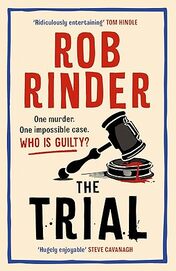 “The Trial” is Rob Rinder’s first foray into fiction and it’s one that will keep you guessing all the way to the big reveal. For those outside the UK who are unfamiliar with Rob Rinder, he is our equivalent to “Judge Judy”. As a successful barrister (trial lawyer for our overseas readers) he was well known in legal circles before venturing onto our TV screens. Now he appears in a variety of shows in different formats, including documentaries. With this foray into fiction, he becomes not only Britain’s Judge Judy, but also Britain’s John Grisham. The story is basically a courtroom drama, but one with a strong human element. Unusually, it doesn’t follow the exploits of an experienced lawyer plying his trade against all odds, but instead the protagonist is a novice, stumbling through the foothills of the legal mountain range as he learns his trade while flirting with the ruination of his career before it even gets started. Adam Green is a law graduate from Oxford University who is the second 6 month of his yearlong pupillage – the basic training for a barrister where he is supposed to be mentored by a King’s Counsel in a prestigious “chambers”, as legal businesses are called in the UK. If Adam performs well he will be offered a “tenancy”, which is basically a full time job in the firm. But there is only one position available at the end of the year and he has a rival with whom he must compete, the attractive and outgoing Georgina. Adam is very much an introvert to Georgina’s extrovert, and she isn’t afraid to use her gender to charm her male colleagues. Adam, while being a very likeable person, usually comes across as socially inept, which is very much a disadvantage in the British legal profession. I frequently found myself wondering how much of Rob Rinder there was in the character of Adam. For the uninitiated (like me) there is a lot of arcane terminology to get your head around that has nothing to do with the law itself, but everything to do with the ancient traditions of the legal profession as practised in the UK. Several hundred years of custom and practice have created a world that is closed to the outsider, but for which Rob Rinder raises a corner of a curtain to allow us to peek inside. "a national hero who once saved the life of the Queen." For example, did you know that barristers never shake hands with other barristers? No, nor did I. It has something to do with barristers trusting each other and not needing to shake hands in order to prove their hands are empty of weapons. Who knew? Stag Chambers, the place where Adam is a pupil, is asked to defend a man accused of murdering a police officer. Not just any police officer, however, a national hero who once saved the life of the Queen. "a deeply unlikeable person who has little time for young whippersnappers like Adam" It is an open and shut case, to all intents and purposes and Jonathon Taylor-Cameron, Adam’s pupil-master (mentor) considered it beneath him to attempt to mount a defence. But legal traditions dictate that he can’t turn the case down and Adam is assigned as his “junior”, or assistant. Which means Adam does the hard work of preparing the case while Jonathon does the grandstanding on the courtroom floor. Needless to say, Taylor-Cameron is painted as a deeply unlikeable person who has little time for young whippersnappers like Adam, creating a major source of conflict within the plot. "A reasonable doubt is all that is required to obtain an acquittal." Adam soon starts to believe that their client, Jimmy Knight, is innocent but the evidence is stacked against him. The big question throughout the book is whether Adam can find the evidence that will get their client acquitted, or at least cast doubt on the evidence provided by the prosecution, so that a reasonable doubt is created in the minds of the jury. A reasonable doubt is all that is required to obtain an acquittal. Obviously, I can’t say much more than that, because it would spoil the book. But I can say that there are so many secrets to be exposed that Adam has his work cut out to make sense of it all. And just to add a bit of extra drama, if he doesn’t make a good job of the defence, it is unlikely that he will be offered the permanent position at Stag Chambers.  Author Robert Rinder Author Robert Rinder Rinder’s writing style is easy to read, and he makes some complex subjects easy to understand. His knowledge of the British legal system is obvious, and he does his best to make sure that readers can understand it as well. I found myself turning the pages in anticipation of the next twist the plot might take and what new secrets would be exposed. There are red herrings aplenty, but the truth is there to be discovered if you can pick up on the subtle clues that Rinder drops into the narrative. But there are also a few lessons to be learned about the morality of the legal system and it becomes quite clear that justice is often not what is done, but what is seen to be done. You would think the legal system is there to establish guilt or innocence, but those concepts seem to slip between the cracks when it comes to what can be proved and what can’t. If you like legal dramas, then I highly recommend you give this one a go. “The Trial” by Rob Rinder is an absorbing read which left me wanting to read Rinder’s next book (assuming there is one) straight away. If you have enjoyed this blog, or found it informative, then make sure you don’t miss future editions. Just click on the button below to sign up for our newsletter. We’ll even send you a free ebook for doing so.
0 Comments
The views expressed in this review are those of the review's author and not necessarily those of Selfishgenie Publishing.
Neither Selfishgenie Publishing nor the author of this review have been provided with a free copy of the book being reviewed, nor has any payment or other inducement been offered for the review. 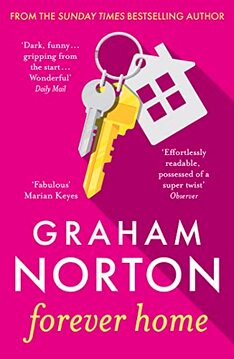
One thing I like about some authors is their reliability; picking up their book and knowing that I’m going to be in safe hands when it comes to the story telling. It doesn’t matter what the genre, the author’s name is their guarantee that I’m going to enjoy the book, no matter what.
And so it is with Graham Norton and this, his third novel, “Forever Home”. I won’t spend a lot of time discussing writing style and story telling competence, because that has already been covered in my reviews of Norton’s previous books. Please take it as read that he is a competent writer and an excellent story teller. What I will talk about, however, is his affinity for location and characters. Graham Norton’s books are set in County Cork in the south of the Republic of Ireland, which is where he grew up and still lives for part of the year. His understanding of the ruggedness of the countryside and the sort of people it breeds is critical to the story in so many ways. When Graham Norton describes a character, you get the feeling that he is intimately acquainted with them. No detail about them is too small to escape his notice. But mainly he writes about these people with great affection. Even the characters you aren’t supposed to like come across mainly as being flawed, rather than being bad. The start of this book makes you think that the story is a cosy domestic drama. A relationship is coming to an end, not because anyone wants it to, but because it has to. What follows, you are led to believe, is the characters dealing with the fall-out from that ending. But then the story takes an unexpected dark twist and you realise that the story you thought you were reading isn’t the story at all. So, what did I think I was reading to begin with? Teacher Carol Crottie, previously married and with a grown up son she hardly ever sees, falls in love with the parent of one of her pupils. After a while she moves in with him and everything seems to be going well. But it isn’t. Carol’s new love, Declan Barry, is diagnosed with Alzheimer’s disease. Carol gives up work to look after him him, but an accident leaves her with a broken leg and unable to care for Declan. He is moved into a care home while Carol’s leg mends. And then Declan’s children intervene. Declan has two children of his own. Abandoned by their mother, Joan, Sally and Killian were in their teens when Carol met Declan. The relationship between Carol and the siblings was never good and now they use an enduring power of attorney, set up by Declan without Carol’s knowledge, to put Declan into permanent care. Not only that, they put Declan's house on the market, selling the roof from over her head. While that is bad news for Carol in terms of losing her home, she also knows that Declan never wanted the house to be sold. He had made that wish quite clear to everyone, including his children. But Carol hasn’t got a leg to stand on legally so, in middle age, she is forced to move back into her parents’ home; a move that is far from welcome by anyone. But Carol’s father, Dave, is a successful businessman and hatches a plan to purchase Declan's house so that she can move back into it. Knowing the siblings would never sell to carol, he plans to do it through one of his companies. Carol doesn’t like the idea, but by the time she can object the deposit has been paid and her parents are unwilling to throw that money down the drain. So, the house purchase goes ahead. And that is the point at which things start to get very dark, and I realised that the story I was reading wasn’t the real story. I won’t spoil the book for you by telling you any more of the plot. But even after Norton introduced that twist I still wasn’t reading the story I thought I was, because no sooner had I thought I’d worked out what was going on, than there was another twist and I found I didn’t really have a clue. So, this is a story that keeps you guessing throughout. Despite its darkness and the misery of Carol's situation there is some humour in this book, most of which comes from Carol’s mother Moira. I strongly suspect Moira is based on a real person. Ok, if the book is that good, why only 4 Stars? This is a personal thing, but I don’t like it when characters who have a big impact on a story are sprung on you late in the book. To prevent a spoiler, I can’t tell you who they are or what they have to do with the story, but I would have liked to have been able to take them into consideration while I was trying to work out what was going on. Just a casual mention of them, with a couple of vague clues that they may have more than a walk-on part to play, was all that was needed. But, as I said, that’s a personal thing and other readers may not be bothered by it. But I do wholeheartedly recommend this book if you like cosy family dramas with a dark edge to them, because that is exactly what you will get here. To find out more about “Forever Home” by Graham Norton, click the link below.
If you have enjoyed this blog, or found it informative, then make sure you don’t miss future editions. Just click on the button below to sign up for our newsletter. We’ll even send you a free ebook for doing so.
Once again we turn our blog page over to a guest book review. Please note that the reviewer received a free review copy of the book, but was not paid for the review or offered any other inducements.
The views expressed are those of the reviewer and not necessarily those of Selfishgenie Publishing. 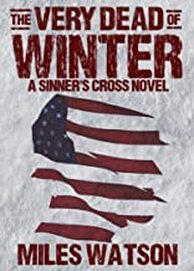
Having recently read Peter Caddick-Adams’ excellent account of the Battle of the Bulge (as it was called by the Allies), in Snow and Steel: Battle of The Bulge 1944-45 I was keen to see what Miles Watson, the author of “The Very Dead Of Winter” would make of telling a fictionalised account.
For a start, had he done his research? It turns out that he had, and I am happy to accept as poetic licence any differences between the known facts and the story as told in this book. In his historical notes at the end of the book, Miles Watson does mention that he has strayed from the known facts in one or two places. But there is a lot more to this book than just the historical accuracy. It is a really great read. So, the setting. It is December 1944 in the Ardennes forest on the borders between Germany, Belgium and Luxembourg. After fighting their way from Normandy, the American Army is pausing for breath and the bad weather doesn’t encourage campaigning. But the Germans have other ideas. Hitler’s latest master plan is to launch a surprise attack through the Ardennes, just as his armies did so successfully in 1940, aiming to reach the port of Antwerp and cut the British in northern Belgium off from their American allies in the south. Without an ability re-supply, the British would have to surrender and without their ally on their northern flank, the Americans would have to stop to re-group and re-position their already stretched forces. That hiatus, so Hitler thinks, will allow him to concentrate on defeating Russia in the east before suing for peace in the west.. Hitler called it Operation Wacht am Rhein (watch on the Rhein), but it had been quietly renamed Operation Herbst Nebel (Autumn mist). It is one of the coldest winters for years and the weather is so bad the Allied air forces are grounded, giving the German Army a much needed advantage. The story is told from three different points of view. The first is Top Sergeant Edward T Halleck, a former cowboy and rodeo rider who has been in combat since the American landings in Morocco in 1942. Wounded in the vicious fighting in the Hȕrtgen Forest, Halleck deserts from his hospital bed but, unlike other deserters, he isn’t running away from the fight, he is trying to get back into it. At which point he is arrested by MPs and taken before a General, who decides a hero like Halleck is just what his inexperienced men need to see in order to bolster their fighting spirit. Halleck is sent to tour the front line and arrives just in time to get caught up in the opening attacks of the battle. The second point of view is from Second Lieutenant Robert O Breese, Halleck’s former green-as-grass platoon commander. He, too, was sent to hospital after being in the Hȕrtgen, but he is what the American Army calls a Section 8. In other words he is mentally ill. Breese disputes this with his psychiatrist and persuades him to let him return to battle. Thanks to an exhausted truck driver, Breese is involved in a crash that leaves him the only survivor, at which point he decides to launch a one man revenge campaign on the Germans who had destroyed his platoon in the Hȕrtgen. The final point of view is that of OberstLeutnant (Lieutenant Colonel) August Cramm. He is a career soldier from a family of career soldiers that goes back almost a thousand years. He has lost an eye and an arm to the war already and knows his chances of survival are slim. As the Intelligence Officer of a Volksgrenadier division, he makes it his job to try to prevent unnecessary loss of life amongst the soldiers of his division, despite the profligacy of the Divisional commander. Once a believer in the German cause, now he is cynical, but is as determined to do his duty as ever he was. Each chapter takes turns to show us how the battle was fought from the three different points of view. However, this book isn’t about grand strategy, it’s about the soldiers who fought the battle and the loss of life and cruel conditions that the combatants had to endure. It’s also about the chaos and mistakes in decision making that nearly led to a disaster for the Americans and eventually did result in disaster for the Germans. A map of the battlefield would have helped, in order to picture where the three different characters are, but that is a minor quibble. History tells us the outcome of this battle, but the questions that readers like me will be asking is “which of these three men, if any, will survive the battle?” and “What lasting effect will the battle have on them if they do survive?” But I’m not going to spoil the book by telling you. The three main characters are well rounded and believable. From the half-crazy Breese to hard bitten Halleck and the cynical Cramm, we get a good feel for what the battle did to the soldiers. At times I felt myself shivering from the cold even as the sun shone outside my window. I could smell the explosives and the powder, the blood and the guts. Time flew by as I immersed myself in the story and it is rare that a book has that ability to absorb me so deeply. The pace of the story is almost exhausting, and I felt almost as tired as Watson’s characters at times. I was torn between giving this book 4 or 5 stars. There are quite a few typos, eg the word ‘all’ loses its second l on many occasions and there are many others. But the sheer skill of the story telling far outweighs these minor flaws, so 5 stars it is. If you are a lover of historical fiction, a lover of military themed fiction or you just love a bit of action and adventure, then this book is definitely the one for you. I have no reservations about recommending it to readers of this blog. To find out more about “The Very Dead of Winter”, by Miles Watson, just click the link below.
This week we turn our blog over to one of our authors, who is reviewing one of his recent reads.
All views expressed are those of the author and not necessarily those of Selfishgenie Publishing. 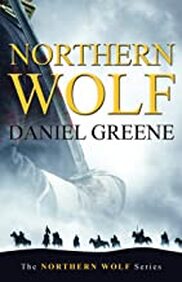
I am pleased to have stumbled across the Northern Wolf series of books, by Daniel Greene, the first one of which gives the series its title.
The title suggests something that might be in the fantasy genre (there is a fantasy series with a similar name), but it isn’t. It is a historical series set during the American Civil War (1861-1865). It had me hooked from the first page, so it is good that the series is available as a box set, so I can keep the cost down because I’m definitely riding along with this one. Johannes Wolf.is a young man who is drifting aimlessly through life. Due to a leg injury sustained as a child he is unable to work and, feeling unmanned by his disability, he settles into a life of drinking and brawling. Unwisely, he decides to take on three brothers, Polish migrants with little understanding of the English language, and he ends up in jail, in the next cell to his three former opponents. At this point a recruiting Sergeant for the Union Army turns up and tries to sign up the three brothers; big, strapping lads who would make good soldiers. The sergeant plays on their lack of language skills to get them to sign the enlistment forms. Wolf signals to the brothers that this isn’t a good idea. He then persuades the Sergeant that he can get the brothers to sign, but only on condition that he too is allowed to enlist (he had previously been turned down by the Army because of his disability). While Johannes may not be able to march very well, he has no problem riding a horse and the Sergeant is recruiting for the cavalry. Unable to resist the temptation of signing three good recruits, the Sergeant agrees reluctantly, and Wolf and the three Poles set off to start a new life in the 13th Michigan Cavalry. They are then shipped off to a training camp outside Washington DC, a city under threat from the advancing Confederate Army. It comes as no surprise to anyone who knows a little bit of history that it isn’t long before Wolf and his comrades are called upon to fight in the Battle of Gettysburg (1st – 3rd July 1863). The 13th Michigan are assigned to the Michigan Cavalry Brigade under the command of the newly promoted Brigadier General George Armstrong Custer, who would later find fame for less glorious reasons, but who has already established a reputation for being something of a maverick and a firebrand. That is a fact, by the way, Custer did command this brigade at Gettysburg, though the inclusion of the 13th Michigan Cavalry in the brigade is a fiction. I won’t go into any more detail here, preferring to let author Daniel Greene tell the story, which he does very well. The plot isn’t a complicated one, but the story is well told and the characters Greene creates are interesting and believable. Johannes Wolf finds he enjoys army life and his new sense of purpose motivates him to become a good soldier. Greene surrounds Wolf with a cast of similarly well rounded characters. So why only 4 stars? It is down to the battle scenes. I found them confusing, unable to picture the whereabouts of the characters within the action; who is doing what, where and to whom. There are no helpful maps of the battlefield and I found I lost track of events very quickly No doubt this reflects the fog of war, but it doesn’t help the reader to keep track of events to see how the battle develops and moves through its critical phases. In particular it doesn’t place the book’s characters at the centre of the action where they can influence the outcome. They become irrelevant to the events around them, less than pawns in a game of chess. As Wolf is the main character, he should be right at the centre of the action, saving the day for the Union Army (even if only fictitiously). There is one scene where Wolf’s character is really influential (I won’t give it away here), but that is one incident in a book that is 245 pages long. However, don’t let me put you off this book because, for lovers of historical novels with a military flavour, it is an enjoyable read. This may not be Richard Sharpe at his finest (my benchmark for 5 stars in this genre), but Wolf is a likeable character and I found I really came to care about what would become of him. For my British readers, you don’t have to know a lot about the American Civil War to enjoy this book. My American readers probably know all they need to anyway. I look forward to reading more about Wolf’s adventures in Book 2 of the series, Northern Hunt. If you would like to know more about “Northern Wolf” by Daniel Greene, just click the link below. If you have enjoyed this blog, or found it informative, then make sure you don’t miss future editions. Just click on the button below to sign up for our newsletter. We’ll even send you a free ebook for doing so.
This week we hand over our blog page to one of our authors, who is reviewing a book.
The views expressed in this blog are those of the blog's author and not necessarily those of Selfishgenie Publishing. 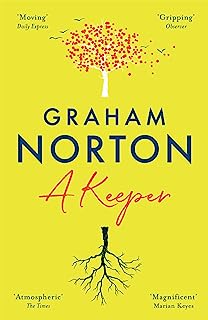
Most Brits and Irish will know Graham Norton as an Irish comedian, actor, TV chat show, Eurovision presenter and radio broadcaster.
I probably missed something there, so I hope he’ll forgive me. But he’s also an author, and a rather good one at that. I started reading his books on the recommendation of a relative (Irish, naturally) and started with his first book, “Holding”. I didn’t review it because it had already been turned into a TV series, so many people will already know about it. In my opinion the book was superior to the TV version, but I’m one of those people who always thinks the book is better than the film (or TV) version so I may be biased. However, I couldn’t wait to review “A Keeper” which is Graham Norton’s second book. It’s a cracker, as the late Frank Carson (another Irish comedian) used to say. While “Holding” was a crime drama, with an out-of-his-depth village Garda (police) officer investigating a murder, “A Keeper” is very different. It hasn’t got any murders in it, but there is a lot of death. An awful lot of death. So, to the plot. Basically it is a detective story, but without any police or detectives. If that sounds odd, don’t worry. Just go with it. Elizabeth Keane came from a small town in Ireland and, like many Irish people before her, went to America, married and raised a family before getting divorced (not everyone who goes to America gets divorced, I know, but she did). She returns to her birthplace (so she thinks) to take care of family business which she has been too busy to attend to in the years since her mother died. She finds a box with letters addressed to her mother, Patricia, from around the time of her birth, which start to reveal secrets about her family. Most importantly, the letters are from her father, who she never knew, as he died not long after she was born. Around the same time, Elizabeth discovers that her son, Zach, who is supposed to be staying with his father in California, isn’t actually with him, having gone off on some adventure of his own. Worried about her son, she realises that there is nothing she can do to track him down from where she is. Her ex-husband persuades her not to cut her visit short and promises to look into the boy’s whereabouts and get back to her. Needing a distraction and intrigued by the letters, Elizabeth decides to look deeper into her past. From there on the secrets start to be exposed, leading the reader down a pathway to the past. But every time this reader thought he knew what was going on, Norton hit me between the eyes with something else which made me completely re-think my theories. I can tell you no more about the plot without spoiling it for you and I wouldn’t want to do that. But, believe me, every time you think “Ah, I know what’s happening here,” Graham Norton smacks you around the head with another surprise, as much to say “Oh no, you don’t know what’s going on”. Graham Norton has a very easy style of writing which makes the book enjoyable to read. He handles the descriptions of both people and places very well. The characters are beautifully drawn and highly believable. Being familiar with the part of Ireland where the book is set means I had no trouble hearing the characters voices in my head, complete with Cork accents (the Irish county, not the thing you take out of a wine bottle). If you are less familiar, just imagine the voice of Father Noel in the episodes of “Father Ted” in which he appeared, and you’ll get the idea. I realise that might not mean much to non-British and Irish readers, so you may need to google it. To save you time I found this on Youtube. Father Noel is the manic one and is played by the author.. Overall, this book is a really good read. While it will make you feel sad some of the time, and really worried about Patricia all of the time, the overall message is uplifting. I highly recommend "The Keeper" by Graham Norton. You can find out more about the book by clicking the link below. If you have enjoyed this blog, or found it informative, then make sure you don’t miss future editions. Just click on the button below to sign up for our newsletter. We’ll even send you a free ebook for doing so. Disclaimer: We are not connected with Bryan Cohen in any way and have no financial interest in his book. This review has not been paid for by Bryan Cohen or anyone else. 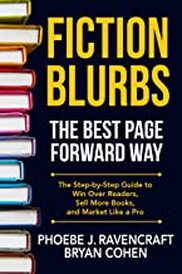 This is a review of one of two books by Bryan Cohen that we think should be read in the right order. This first one, “Fiction Blurbs: The Best Page Forward Way” is about improving your blurb writing technique so that readers feel more compelled to buy your book. The second book, “Self-Publishing With Amazon Ads” teaches you about increasing the profitability of your advertising campaigns. What links the two? One of the “tweaks” that the second book suggests to increase sales is to improve your book’s blurb. So, if that is a tip for increasing sales it seems sensible to us to try to improve our blurbs before we started spending money on advertising, so that we don’t spend money on advertising only to find out that our blurbs might need improving. 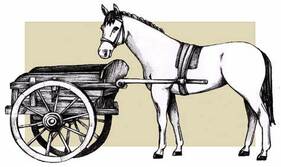 Still not quite right! Still not quite right! It is putting the metaphorical horse in front of the cart rather than behind it. But don’t worry, we’ll be reviewing “Self-Publishing With Amazon Ads” next week, so that you can get the whole picture. Having said this book is by Bryan Cohen I must now correct myself and tell you that it is actually written by Phoebe J Ravencraft, an associate of Bryan Cohen, who works for his company, Best Page Forward. But they get joint author credits. First of all, what about the authors’ credentials for writing a book such as this? Best Page Forward has written over 5,000 book blurbs for self-published authors. Phoebe herself has written or overseen the writing of around 3,000 of those. She comes from an advertising copywriting background. They have gathered plaudits from satisfied customers and the blurbs they have created have stood the test of time to sell books. I think we can safely say that they know what they are talking about.  In one of our marketing blogs, repeated last autumn, we advised selling the sizzle, not the sausage. In other words, we recommended not trying to describe your book to the reader but trying to excite their imagination about how dramatic/entertaining/insightful/hilarious (insert other adjectives of your choice) your book is going to be. That is exactly what this book strives to do. That was good enough to convince me to buy the book. If it does that for us, the money spent on it will be repaid just by selling two extra copies of one of our books. As both an author and a publisher I have written dozens of book blurbs, so I thought I knew what I was doing. We had done plenty of research to try to find out what made a good blurb and we followed the lessons we had learnt, but there was still a nagging doubt in our minds that we might not be getting it right. Our sales suggested that there was something amiss. We were getting lots of clicks on our adverts, but they weren’t converting into as many sales as they should.  So, when I started to read this book, pennies started to drop to tell me that doing what other people were doing was the problem. What we needed to do was to be different, to make our blurbs stand out from the crowd. Readers are too easily distracted by metaphorical shiny things, so the solution to that is for our book blurbs to be the shiny thing that distracts them from other books. Chapter by chapter, Phoebe (if she’ll permit me the liberty of addressing her by her first name) lays out the elements that go into writing the “killer” book blurb that we wanted, and then how to structure the different elements to get the most out of them. It wasn’t that the blurbs we wrote were actually bad. After all, we're conforming to what we understood to be “best practice”. It was more that they could have been so much better. For the most part, they were selling the sausage, not the sizzle. They described the book, but they didn’t describe the emotional ride that was contained within the book. Emotions, it turns out, are the sizzle that sells the sausage.  I sort of knew that already, because I have always believed that books should be character led, not plot led. Readers engage with the characters at an emotional level and come to care about them and that is what keeps them turning the page, not the plot itself. And that emotional engagement, it turns out, is what has to be at the heart of the book’s blurb. There is a lot more to it than that of course. Conflict, jeopardy, structure and vocabulary all play a massive part, but without the emotion the book still won’t sell. I’m not going to ruin the book’s sales by telling you what tools and techniques are taught within its covers. You’re going to have to pay to find out, just as we did. Suffice to say that every page provides something new to learn. Even if your blurbs are already good I feel quite confident saying that you will learn something new from this book. Readers will note that I have given the book only 4 stars where, from what I have said, you might expect that it should be worth five stars. That isn’t because of the lessons that the book teaches. It is only because of the style in which those lessons are taught. "As an author and as a publisher I have limited time available" The author uses well known books and films to illustrate the lessons and there is nothing wrong with that. Many of those books and films are her personal favourites. Again, there’s nothing wrong with that. However, at times I found that the point being made was laboured and that the author was getting rather carried away with her own passions. While such enthusiasm is to be admired, it can be a little too much when the reader has already grasped the key message and only wants to move on to the next lesson. As an author and as a publisher I have limited time available, and this book took a little more time to read than was essential. Perhaps it was designed to pad the word count, so the reader thinks they’re getting value for money, but the real value isn’t in the number of words, it’s in the messages. But that is a minor criticism and I feel secure in saying that anyone buying this book will have their money repaid quite swiftly if they learn the lessons and apply them to their blurb writing.  So, what are my main takeaways from this book? The first one I sort of already knew but being reminded of it didn’t hurt. The purpose of the blurb is not to describe the book; it is to sell the book, which is an entirely different technique. According to Phoebe, you don’t even have to read the book to be able to write its blurb. Secondly, creating a good blurb isn’t easy and it requires practice and hard work. I soon discovered that when I tried to re-write the blurbs for the books we publish. What I thought would be about ten minutes work per book turned out to take considerably longer and they still aren’t perfect (though they are better). Finally, a good blurb taps into your emotions and raises the “risk” level for the protagonist so high that the reader has no choice but to buy the book to find out what happens. Get that right and the book will sell. But I’m sure you want to know if re-writing the blurbs for our books made any difference to our sales.  First of all, judge for yourself. If you go to our “Books” page we have re-written most of our blurbs. I’m not suggesting they are perfect. In fact, I’m sure that Phoebe J Ravencraft would suggest some improvements if she were to read them. But they are different to our previous style. Just ask yourself one simple question – having read any of those, do you feel tempted to buy the book? More importantly, has our conversion rate for sales improved? We actually got an instant return for one book. The day we changed the blurb it got its first sale in months. Coincidence? Possibly, but we think it may have been the new blurb. Then a second book got its first sale in months, followed by a third. Too many for coincidence; this was a trend. I’m not going to pretend any of those books went from non-seller to best-seller overnight as a result of the tweaks we made - but “Fiction Blurbs: The Best Book Forward Way” paid for itself within a week and is still paying for itself in terms of sales. I highly recommend “Fiction Blurbs The Best Book Forward Way” by Bryan Cohen and Phoebe J Ravencraft. To find out more about the book, click here. Next week we’ll be reviewing another book which could help you to sell a lot more of your own books, so be sure not to miss our blog. In fact, why not sign up to our newsletter to make sure you don’t miss it. We’ll even send you a free ebook if you do. Just click the button below. This week we hand our blog to one of our authors, who is reviewing a book. 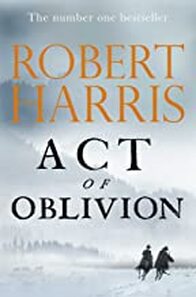 I’m a lover of historical fiction, so when I heard about this book it was an easy decision to buy it. What made it even more attractive was the fact that many of the people who are used as characters in the book were real. They lived and breathed and did many of the things that the author attributes to them. While some of the story may be fiction, a lot of it is historical fact. Act of Oblivion, by Robert Harris, is set during what was known in England as “The Restoration”. That period after the end of the rule of Oliver Cromwell, when the monarchy was restored to England (Useless trivia- it was still known as England even though it included Scotland, Wales and Ireland. It wouldn’t become “Britain” until 1707). When Oliver Cromwell died, it was his wish that his son, Richard, succeed him as “Lord Protector” (King in everything but name). However, the English establishment didn’t fancy that. If they were going to have a King, they wanted it to be a proper King and the rightful heir to the throne. So, Charles Stewart, son of the executed King Charles I, was invited to come back from his exile in Flanders. There was the thorny issue of what to do about the people who had fought against his father, so The Act of Oblivion was passed by Parliament. This guaranteed that a free pardon was granted to all who had fought on the side of Parliament during the English Civil War, with the exception of a small group of people. That small group of people included the men who had sat in judgement on Charles I at his trial and those who had signed the warrant for his execution, about 50 or so men. A couple gave themselves up in the hope of receiving Royal mercy, some had already died of other causes, some were living in exile in Europe, and some had gone into hiding in England. At least two fled to the American colonies, where there were many allies of the Parliamentary cause and its Puritan religious supporters. The book starts in 1660, just after Charles II returned to the throne, with the arrival in New England of Colonel Edward Whalley and Colonel William Goffe. They are two former soldiers in the Parliamentary Army (Roundheads, as they were known because of their dome shaped helmets) who are on the run under threat of execution, having been two of the signatories of the execution warrant of the late King Charles. Whalley also happens to be Goffe’s father-in-law. They were real people. As well as being a soldier, Goffe is also a zealous Puritan, with a knack for giving rousing sermons. Whalley, while being Christian, is less committed to the Puritan ideal. Much of the story follows their travels around the fledgling colonies of Massachusetts and Connecticut as they try to evade capture and are protected by likeminded colonists. In London we have Richard Naylor. He is fictitious, but as Harris says in his introduction to the book, if you have a hunt, you must have a hunter and Naylor represents all the real life hunters of the wanted men. Naylor is a bitter man and is relentless in his pursuit of Whalley and Goffe, against whom he has a personal grudge, as well as the others under sentence of death. He is Clerk to the Privy Council, which allows him to wield enormous power. However, he finds that his power is limited by geography and what he can do in England to intimidate people he isn’t able to do in America, despite it being under English rule. London is a long way away and it would take a lot of English troops to enforce the warrants that Naylor is carrying. "You don’t have to know much about the English history of this period to enjoy this book" I think we are supposed to feel some sympathy for the characters of Whalley and Goffe. They were coerced into signing the execution warrant by Cromwell (which really happened) and see themselves more as victims. However, I had little sympathy for them. There is a considerable difference between doing one’s duty as a soldier and signing a death warrant because you have been ordered to. do so. But that is just my opinion. You don’t have to know much about the English history of this period to enjoy this book. Pretty much all the historical information is skilfully fed into the narrative along the way. It is very well researched. If you are an American and would like to understand a little more about what life was like in your country in the second half of the 17th century, then you may find this book of interest. You may also discover why your country has some of the political and religious views that are held by some people today, because history does sometimes repeat itself. You will also find out how New Amsterdam became New York. The pace of the book is what I would describe as “steady”. There are points of high action, but there are also long passages when not a lot happens, which is why I have only given the book 4 stars rather than 5. Whalley and Goffe are in hiding for lengthy periods and it’s difficult to inject much pace into those sections. However, they are important when it comes to understanding the historical and religious context of the English Civil War, as Edward Whalley starts to write a memoir of Cromwell, which tells us a lot about the man.. Harris is a very successful author, so it is not for me, a mere reader, to comment on his writing skills, but I can tell you that I never lost interest in the book, and I also learnt a lot, sometimes without even realising that I was learning things. I would recommend this book to readers of historical fiction on both sides of the Atlantic Ocean. If you want to know more about “Act of Oblivion” by Robert Harris, just click the cover image or use this link. 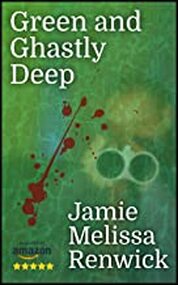 Another book found by accident. The author said on Twitter “If anyone buys my book, I’ll help them with Wordle”. I replied, “If you never mention Wordle again, I’ll buy your book.” It got a laugh and a deal’s a deal, so I bought her book without knowing anything about it. And I’m quite pleased that I did. It’s a crime caper with a female protagonist, a sort of bra wearing Jack Reacher, but with a lot more self-awareness and depth than Reacher is given. This protagonist knows her limits and tries to avoid situations where those limits may be exceeded. But as in all thrillers, she doesn’t always see things coming. But she’s still a feisty type and doesn’t take any BS from anyone, as she proves early in the story. The Green and Ghastly Deep, by Jamie Melissa Renwick, forms part of the "Theresa Maddux" series, but in this story we find out a lot of stuff that even Theresa (who likes to be called Reese) doesn’t know about herself. This voyage of discovery forms a sub-plot to the main storyline. "the book stands alone as a novel " So, Reese is enjoying a fishing vacation in Canada, where she lives, though she is actually American by birth and nationality. Her phone rings (they obviously have good wilderness coverage up there) and she is informed that her mother has been murdered in what appears to be a burglary gone wrong. Reese isn’t the type to let the police dismiss the incident so easily and hot-foots it back to her hometown – just outside Washington DC - and starts her own investigation. Yes, Reese has the skill set to do that, it goes with her day job of being a “recovery expert”. She recovers lost things (or people) for the people who have lost them and where it might not always be their wish to involve the police – or if the police aren’t interested or effective enough. Needless to say, her day job brings her into contact with some rather unsavoury characters and this is important for the plot of this book to work. Despite this back story, the book stands alone as a novel – you don’t have to have read the others in the series to enjoy this book for itself. Indeed, if you enjoy this book it may be an encouragement to read the others in the series. "The story is well written," The plot rattles along nicely with enough incident to keep the reader turning the pages. We discover things at the same time as Reese discovers them, so it isn’t possible for it to be a “whodunnit” that the reader can solve. Reese is convinced from the outset that her mother’s murder was more than just a burglary gone wrong and the “who” becomes apparent well before the end of the book, so the story is much more about the “why” of the murder. While the police will be satisfied with the who, finding out the why is Reese’s self-appointed mission. The story is well written, though it could do with much tighter editing. That’s why I’ve given it 4 stars rather than the 5 I might have thought about giving. There are a few scenes that just didn’t work for me and the input of an editor might have made them more convincing. To give a couple of examples, there is a conversation that takes place in the back of a mobster’s limousine that contradicts itself; something that an editor would identify and suggest is corrected. There is also a tantalising thread left hanging at the end of the book. We don’t know if this is deliberate, to be followed up in another book, or whether the author just didn’t think to tie it down. "Jamie’s books sell for bargain prices." But don’t let me put you off this book. Jamie Melissa Renwick is a good writer, and the book is well worth considering if you are looking for a crime thriller or a new author to follow. Just a word of warning if you have a weak stomach, as the graphic depictions of violence might leave you feeling a little queasy. I recommend The Deep and Ghastly Green by Jamie Melissa Renwick and I assure you that I’ll be looking into her back catalogue for future reading. In fact, I’ve already bought “Gunmetal Blue Moon”, the next book in the series (yes, I know that isn’t “back catalogue”). And for readers who are on a limited budget, Jamie’s books sell for bargain prices. If you enjoyed this blog or found it informative, why not make sure you don't miss future editions by signing up for our newsletter? Just click the button. or why not become one of our guest reviewers? Details of how can be found on the same page. 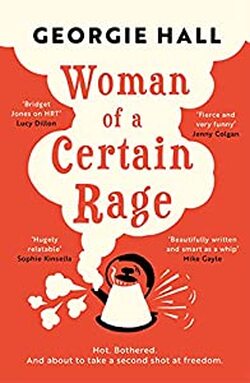 When I sit down to write a book, I have a very clear picture in my mind regarding the person who is going to buy and read it. OK, it has to be a bit generic, but I know their probable gender, their typical age range and the sorts of interests that they have. I try to write in a way that will appeal to them specifically. As a multi-genre author, I have several of these images, to suit my different target audiences, but I won’t go into details about them now. I’ll save that for another blog. But my point is that if author Georgie Hall also creates a mental image of her target audience, I doubt she would have imagined me. Which is a pity, because her book, “Woman of a Certain Rage”, should be read by all men of a certain age. At any time, half the population of the world is either going to go through the trials and tribulations of the protagonist, Eliza Hollander, they are actually going through them or they have been through them already. If men who are in a relationship with women were to read this book, it might help them to understand their partners better and it may also help to save a few relationships.  But I’m guessing that this book was aimed mainly at women of a certain age and will mainly be read by them. As I said before, that’s a bit of a pity, made even more so by the fact that it’s a very enjoyable read, says a man of a certain age. Eliza Hollander is fifty and is suffering the rigours on menopause. The use of that word alone will probably send male readers rushing towards their man caves with their fingers in their ears and singing "la la la" to keep the noise out. But if you are male and still reading, I encourage you to continue. Eliza once had ambitions to become a great actress, until life got in the way and she had to settle for a lesser career. She still practices her art, but not on the grand stage she once imagined. Her relationship with husband Paddy is strained, for many reasons. The triggering event for the book is a simple one, which many readers might relate to. Her beloved dog died. The dog’s unquestioning devotion helped to mask the cracks that had opened up in Eliza’s life and now she is forced to face them at the same time as she is having to deal with the menopause and all that goes with it. "Eliza is made of sterner stuff" Eliza has three children: Joe who is a student activist, Summer an A Level student and wannabe social media influencer who is suffering a teenage crush on one of her teachers and Ed, who suffers from autism, which brings along its own problems. Throw into this mix the family from hell (well, purgatory at least) and an amorous Italian restauranteur and you have the cast list for a delightfully humorous and touching novel. But Eliza is made of stern stuff. She wants to fight back against the aging process and “make a difference”, just as she had planned to do when she was a young actress in the late 80s. Like many women of her age, Eliza feels she has become invisible and wants to be seen as a person once again. So while the backdrop of the book may be the menopause, the foreground is very much Eliza’s fight to get her identity back, at the same time as she saves her marriage.  A narrowboat, not a barge, but also a vehicle for a metaphor. A narrowboat, not a barge, but also a vehicle for a metaphor. It helps if, as a reader, you have a liking for narrowboats (or barges as they are sometimes incorrectly called) but that isn’t essential. The narrowboat in question is just a vehicle (groan) to help carry a larger metaphor. I won’t go into detail but “The Tempest”, as the narrowboat is called, plays a pivotal role in the story for several reasons. It also helps to have a liking for the writings of Shakespeare but that, too, isn’t essential. The book is well paced and it is very easy to engage with the likeable Eliza, who tells her story in the first person. Starting the book I was unsure that it was really something that I would enjoy, but a couple of chapters later I found that I was wrong about that. Despite the difference in gender and the biological issues that creates, I was able to relate to quite a lot that Eliza was describing. In between narrating the current plot, Eliza goes back and tells us what her earlier life was like and that provides plenty of light and shade for the story. These passages are memories, not flashbacks, and make it easier to understand how Eliza drifted into the unsatisfactory state in which she now finds herself.  What does the future have in store for you? What does the future have in store for you? So, an engaging and entertaining book which works on several levels. If you are female and under forty, read this to find out what life has in store for you. If you are female and over forty, it may help you to know that you are not alone and if you are male and in a relationship with a female in either of the aforementioned groups, then this will help you to prepare for what might lie ahead. I just hope it doesn’t send you running for the hills in fear, because your partner will need you, probably more than at any other time of her life. I highly recommend “Woman of a Certain Rage” by Georgie Hall. To find out more about the book, click on the cover image at the top of this blog. If you have enjoyed this blog and/or found it informative, be sure not to miss future editions by signing up for our newsletter. We promise not to spam you. Just click on the button below and you will also qualify for a FREE eBook.. And if you would like to be a guest book reviewer for the Selfishgenie blog, please contact us to find out how.
Just 3 rules: 1. You can't plug your own work (though we may give it a mention in our introduction), 2. We don't pay and 3. We reserve the right not to publish any review. 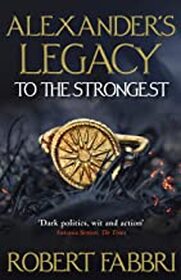 I have been reading books by Robert Fabbri for several years, following his series about the rise of the career of the Emperor Vespasian. This led me to this book, “Alexander’s Legacy: To The Strongest”, the first in a 2 book series about what happened to the Macedonian Empire after Alexander the Great died. Well, quite a lot happened and this book tells it in an exciting fashion. To give you the backstory, if you didn’t already know it: Alexander has conquered his way across the Middle East, Central Asia and into the northern limits of India. He returns to Babylon where he succumbs to illness. Some say he was poisoned, some that he died of natural causes and some say he died of wounds suffered in his final battle in India. You can make up your own mind about that but given the ambitions of several of the people around Alexander, poisoning can’t be ruled out.  Alexander the Great Alexander the Great On his death bed Alexander is surrounded by his seven bodyguards, the men who have followed him loyally across continents. They have only one question on their lips: who is to succeed Alexander? This is not a question Alexander wishes to answer, probably because he doesn’t want anyone to eclipse his achievements. Instead, he replies enigmatically “The strongest”, passes his ring to Perdikkas, one of the seven, and then dies. Perdikkas sees Alexander’s final act as an indication that he should take up the reins of power, which puts him in a minority of one. The other six will only accept the authority of a named successor. Alexander’s natural heir is his half-brother, Phillip, who is mentally incapable of ruling without someone to guide him. This starts a rivalry over who that someone should be.  Ptolemy - founder of a dynasty Ptolemy - founder of a dynasty Alexander also leaves a pregnant wife, Roxanna, and if her child is a boy, he becomes heir, but he would also need a regent until he comes of age. Some of the bodyguards have lesser kinships to Alexander which might allow them to claim the throne, others see themselves in the role of regent, either to Phillip or to the unborn child. Throw into the mix Alexander’s exiled but power-hungry mother, Olympia, who sees Alexander’s death as her opportunity to retake her place at the centre of events and this sets the scene not just for this book, but for the series. The seven bodyguards vie for power and eventually agree to divide the empire between them, controlling large swathes of it until Roxanna’s child (if it’s a boy) comes of age or until some other solution presents itself. In Macedon itself there is Antipatros, the Regent left there by Alexander to govern in his absence. Ptolemy* takes Egypt, with ambitions to expand his satrapy to the west. Perdikkas retains control of Babylon and various smaller tracts of land are handed over to the remaining members of the bodyguard. Also, each has an army, but no single army is capable of seizing control of the empire. 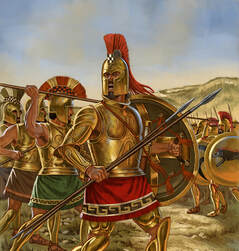 Then there is Alexander’s body. Whoever gains control of that also has a stronger bargaining position. While Perdikkas has the body in Babylon he is in a strong position, but can he keep control of it once he sends it to Macedon to be buried? Meanwhile, Eudamus, Alexander’s Greek secretary and, more recently, a general, knowing he can never inherit the throne of Macedon, sets himself up as king maker, offering his advice and support to whoever makes him the best offer. He isn’t known as “a sly little Greek” for nothing. If you don’t know what happens next (I didn’t) then you won’t want me to spoil the story by saying anything more. The story is told using several different viewpoints, with several of the main characters taking turns to tell their own part of the tale. No doubt is left as to which point of view is being seen at any time, as the chapter headings make that clear. I highly recommend “Alexander’s Legacy: To The Strongest” The plot is engaging and trots along at a nice pace and for fans of Greek or Roman historical fiction I would say that this is a good read and well worth getting into. The research (as far as I can tell) is solid, though the author admits to having to take some small liberties. But he doesn’t purport to make this anything other than a work of fiction, so we can allow him some poetic licence. The wealth of ancient Greek and Macedonian names provides room for confusion; Krateros and Kleitos kept me guessing on more than one occasion. But these were real people once upon a time, so their names can’t really be changed. If you are a feminist, be prepared to get angry because, with the exception of Olympia and a cousin of Alexander’s by the name of Adea, they are seen as a means to cement alliances, no more. Even Adea, who is quite a feisty type, is set only on snagging herself a husband in order to gain power. But that was the nature of the patriarchy in the 4th century BC and it can’t be changed now. I have one adverse comment to make about the book, which is unusual for an author with Fabbri’s track record. The editing is quite poor. There are jumps in the timeline that are made without any sort of signpost, so one character will be engaged in a scene with another and then suddenly a third character appears without warning or introduction. Or there are time gaps or changes of location which take time to work out as they aren’t signposted in any way. In one sentence the characters may be in the throne room and in the next they are apparently somewhere else, without seeming to have moved. There are also numerous typos and punctuation errors. Whoever at Corvus Books was responsible for that really needs to take a fresh look at their work, because it is quite shoddy in parts. However, those are technical issues and shouldn’t deter any reader who wants an enjoyable Ancient Macedonian drama to get their teeth into. I highly recommend “Alexander’s Legacy: To The Strongest” by Robert Fabbri. To find out more about the book, just click on the cover image at the top of this blog. * Ptolemy was the founder of a dynasty of Macedonian-Egyptian Pharaohs that ended with Cleopatra and her famous suicide by asp bite. And if you would like to become a guest reviewer for the Selfishgenie blog, just go to the contacts page to communicate with us. There are just three rules:
If you have enjoyed this blog, found it entertaining or informative (or all three) then be sure not to miss future editions by signing up for our newsletter. Just click the button below. |
AuthorThis blog is compiled and curated by the Selfishgenie publishing team. Archives
March 2025
|











 RSS Feed
RSS Feed